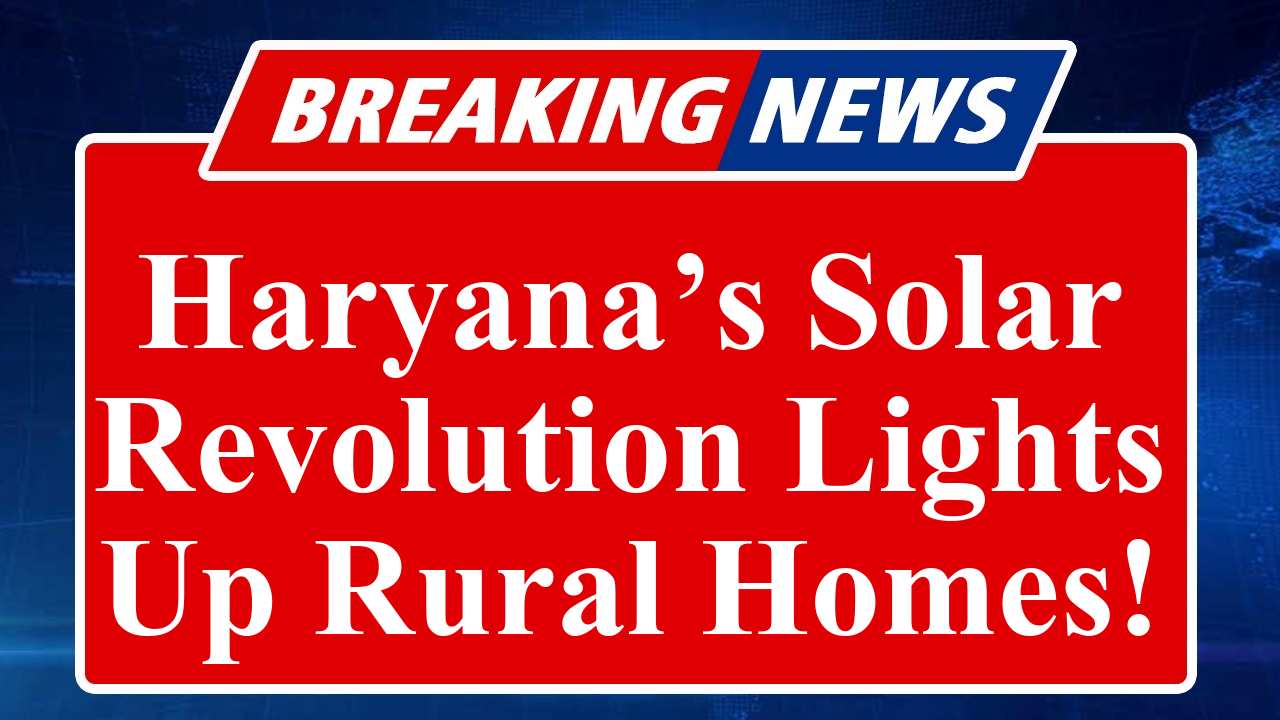“Haryana’s Solar Village Initiative, launched under PM Surya Ghar: Muft Bijli Yojana, aims to electrify rural homes with rooftop solar systems. Targeting one crore households nationwide, it offers subsidies up to 40% for solar installations, reducing electricity costs and promoting sustainability. In Haryana, model solar villages are being developed to showcase renewable energy’s potential, supported by extensive training and financial aid.”
Haryana Pioneers Solar-Powered Rural Transformation
On June 4, 2025, Haryana took a significant step toward sustainable rural development with the launch of the Solar Village Initiative under the PM Surya Ghar: Muft Bijli Yojana. This ambitious program, aligned with India’s renewable energy goals, aims to install rooftop solar systems in rural households across the state, reducing dependence on conventional power and slashing electricity bills for residents. The initiative is part of a broader national target to solarize one crore households, offering up to 40% subsidies for solar panel installations.
Haryana, with its abundant sunlight—approximately 330 sunny days annually—has emerged as a frontrunner in solar energy adoption. The state’s renewable energy capacity stands at 2,157 MW, with solar contributing 1.9 GW, according to the Haryana Renewable Energy Development Agency (HAREDA). The Solar Village Initiative focuses on creating model solar villages in each district, showcasing solar-powered lighting, water systems, and agricultural pumps. These villages serve as blueprints for scalable renewable energy adoption in rural areas.
Under the scheme, households installing solar systems up to 2 kW receive a subsidy of Rs. 30,000 per kW, while systems up to 3 kW qualify for Rs. 18,000 per kW, with a maximum subsidy of Rs. 78,000 for larger systems. For Antyodaya families with annual incomes up to Rs. 1.80 lakh, Haryana offers an additional state subsidy of Rs. 25,000 per kW or 40% of the billed amount for systems up to 2 kW, making solar adoption more accessible.
The initiative also emphasizes training and capacity building. Over 2,700 ITI students have been trained in solar equipment installation, ensuring a skilled workforce to support the program’s rollout. Banks play a crucial role by facilitating loans for beneficiaries, streamlining the financial process for rural households. As of April 2025, 9,609 rooftop solar systems with a combined capacity of 45.90 MW have been installed in Haryana, with Rs. 52.54 crore disbursed in subsidies.
The state is also promoting solar energy in public infrastructure. Surveys of 3,011 government buildings have identified a potential to generate 91.78 MW through rooftop solar projects, with tenders issued for an 8.4 MW project under the CAPEX model. Additionally, the LED-based Solar Photovoltaic (SPV) Street Lighting Scheme is reducing reliance on traditional power sources in rural areas, with subsidies of Rs. 4,000 for LED-based solar streetlights and Rs. 20,000 for high-mast lighting systems.
Farmers are a key focus of the initiative, with a 75% subsidy on solar water pumps (3 HP to 10 HP) under the PM-KUSUM scheme, enabling cost-effective irrigation and reducing diesel dependency. Farmers like Ajay Nandal from Nigana village in Rohtak have reported annual savings of Rs. 30,000 by switching to solar-powered pumps, highlighting the initiative’s tangible benefits.
Haryana’s Solar Village Initiative is not just about electrification but also about fostering energy independence and environmental sustainability. By leveraging solar energy, the state aims to meet 25% of its power needs from renewable sources by 2025, aligning with national goals of 500 GW renewable energy by 2030. The program’s emphasis on community-driven solutions, coupled with robust policy support, positions Haryana as a leader in India’s clean energy transition.
Disclaimer: This article is based on information from government sources, including HAREDA and the Ministry of New and Renewable Energy, as well as reports from credible news outlets and web resources. Data is accurate as of July 5, 2025, and subject to change. For the latest updates, refer to official government portals.

